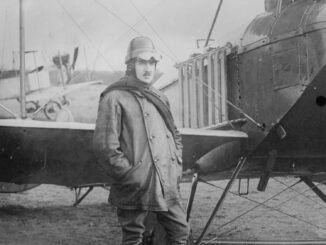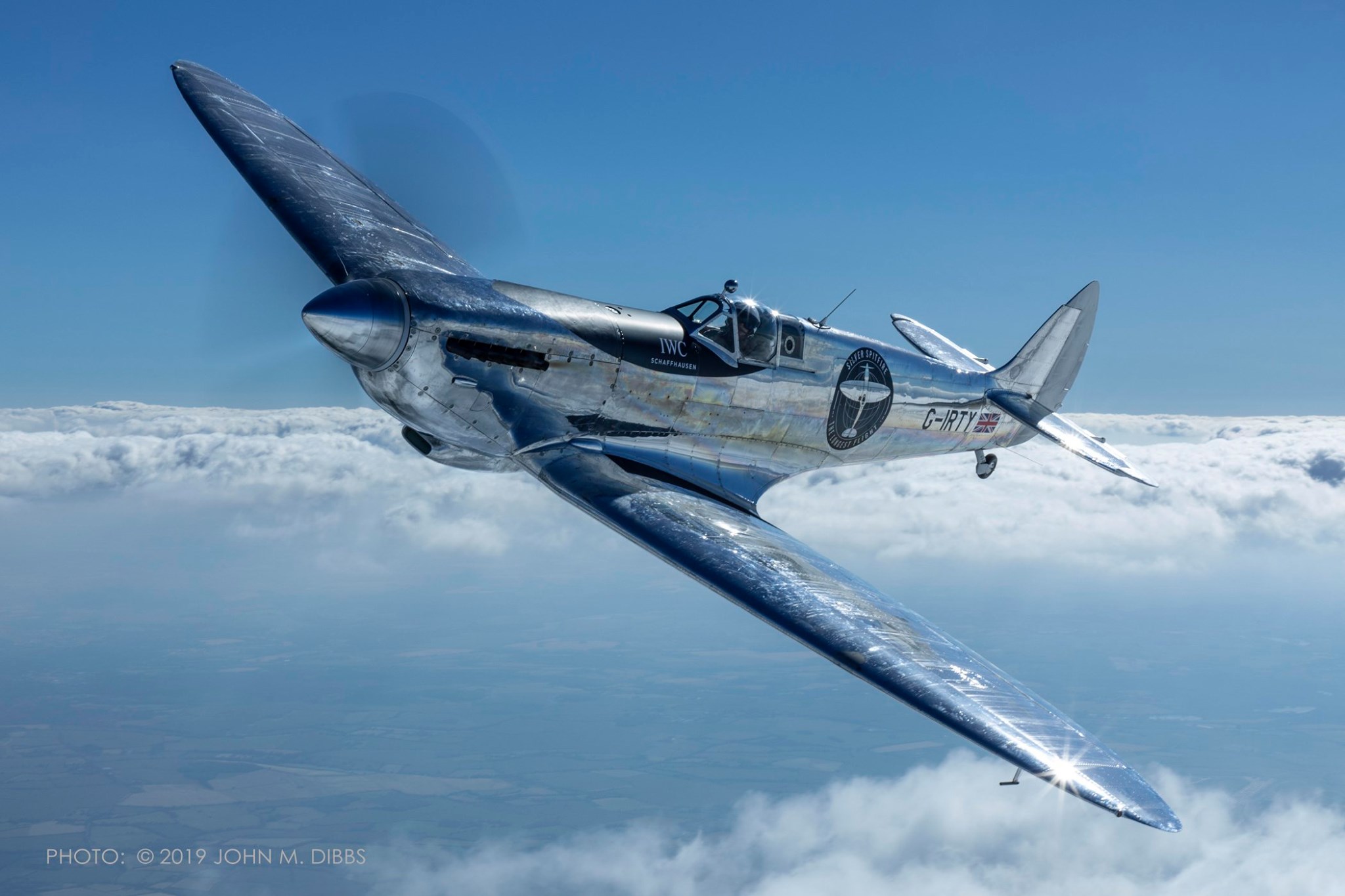
Thinking of the most famous fighter aeroplanes of the Second World War period, with no doubt a British Supermarine Spitfire is the first name that comes to minds for many of us. That is absolutely right, as that aircraft became one of an absolute icon of not only the British, but the worldwide aviation.
There were more than 20,000 Spitfires built between 1938 and 1948 and they were used on practically all theatres of the World War II. Notwithstanding the huge contribution on winning the war, the aircraft also broke an altitude and speed records. Fortunately, the aviation enthusiasts may still enjoy the view of this beautiful elliptical-winged fighter today, and not only in museums, but also performing flying displays at air shows. Currently there are approximately 60 airworthy Spitfires around the world and a next few dozen stored or being restored to the flying condition.
And the history written by Spitfire is not over now… In a moment, one of the legendary Spitfires will attempt to break another record, this time in the longest flight category, by flying around the world.
Since the very beginning, aviation is all about passion. That was a key element of a human quests for flying and all the famous efforts in the history of aeronautics. It is no different in this case either. The idea of such a venture was born in minds of two aviation enthusiasts, Steve Brooks and Matt Jones, the founders of the Boultbee Flying Academy, which is the first and the only Spitfire flying school in the world. Since 2010, the company provides flight training for pilots and flight experience for people not having a pilot’s license on two-seat variants of Spitfires, as well as in the only 100% accurate-cockpit, surround vision Spitfire simulator in the world.
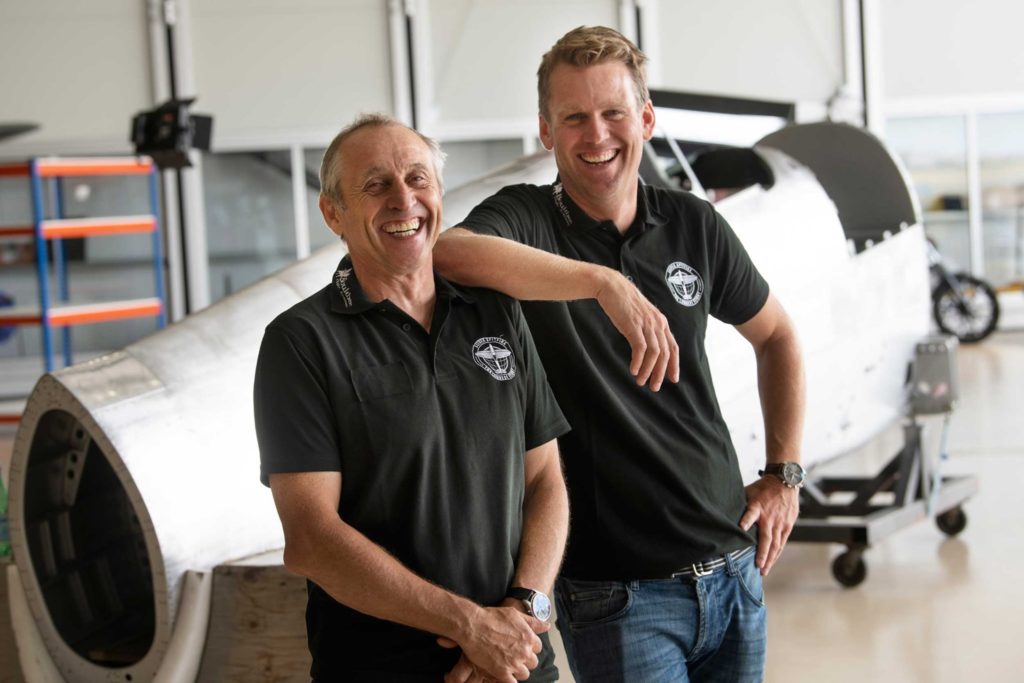
When Brooks and Jones bought their first two-seat Spitfire on an auction, they started to think about doing something unusual and unique to rejoice their favourite aircraft. Initially, Brooks’ idea was to bring a Spitfire to Africa, but Jones was thinking about something even more ambitious. Then one day they met Lachlan Monro – the former British Army Officer with many years of experience in business managing. Monro was also interested in aviation, because his father was both military and civil pilot. It just so happened, that he was thinking about an adventure very similar to the ideas already being discussed between Brooks and Jones. And as a result, they joined their forces and created the common project called: Silver Spitfire – The Longest Flight Expedition.
The Spitfire, that was chosen to perform the historic, longest flight, is said to be one of the most original airworthy Spitfires in the world. Moreover, there is an interesting history behind that particular aeroplane. She is a Mk. IX variant, that was manufactured in 1943 by Vickers Supermarine Ltd. in Castle Bromwich and received the serial number CBAF.IX970. On 24th October 1943, the aeroplane already registered as MJ271 was delivered from the factory to the 33rd Maintenance Unit at RAF Lyneham. Then she was transferred to the 411th Polish Repair and Salvage unit in order to harmonise the machine guns and perform test flights.
Next year, on February, 1944, the Spitfire was assigned to the 118th Fighter Squadron at RAF Detling, close to Maidstone in Kent. The aircraft accomplished sixteen combat missions, during which she was providing escort and cover for B-17, B-24 and B-26 bombers, and performing raids on V-1 launch sites. Among the other tasks the MJ271 was flying in the 118th Squadron, were the fighter sweep missions over French territory.
Then, at the turn of April and May of the same year, that Spitfire was reassigned to the 132nd (City of Bombay) Squadron and transferred to RAF Ford in Sussex. In the Bombay Squadron the aeroplane flown another 28 combat missions, escorting B-25s and B-26s, and performing dive bombings on the French coast. At night on 9th May, 1944 MJ271 had a belly landing at its base, as a result of which she was delivered to Hamble on 15th May, 1944, for being repaired. The Spitfire was ready for operation again in a bit more than a month later, on 24th July.
Next month, on 19th August, the aircraft was transferred to the 39th Maintenance Unit at RAF Colerne, and later to the 83rd Group Support Unit based at RAF Bognor on 19th September, from whose was subsequently forwarded on 4th November to RAF Westhampnett – nowadays known as Goodwood Aerodrome and being home of the Boultbee Flight Academy.
With the next transfer, the aerolane began her service with the Royal Canadian Air Force, being assigned to the 401st Squadron (City of Westmount). On 23rd November 1944, the squadron moved to Netherlands and was based at a nowadays well-known air base in Volkel. After accomplishing another ten dive-bombing missions in the 401st Squadron, the Spitfire was sent to the Canadian 410th Repair and Salvage Unit.
On 21st June 1945, the MJ271 was delivered back to England and forwarded to the 29th Maintenance Unit at High Ercall. And shortly after that, her air force markings changed again, as the aeroplane entered into service in the Royal Netherlands Air Force on 25th November 1946. During her service in the RNLAF, the MJ271 was flying with code letters H-8 and 3W-8.
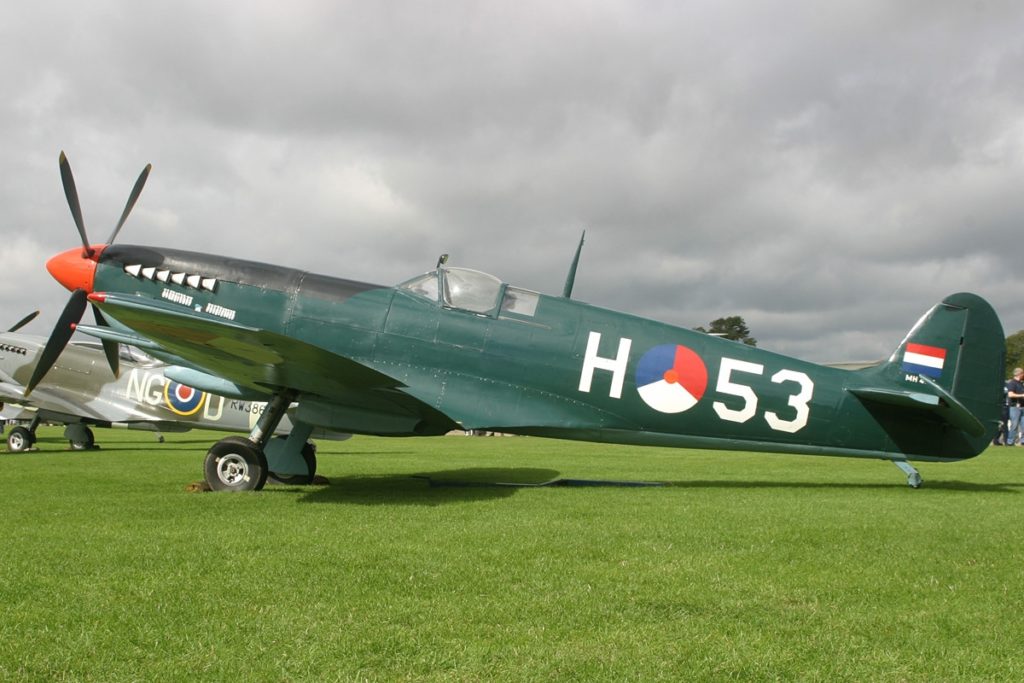
After the withdrawal from the active service MJ271 was used as airfield decoy at Volkel Air Base between 1954 and 1957. During the next several dozen years the Spitfire was displayed at indoor and outdoor exhibitions by various museums in Netherlands and her livery and markings were changed several times.
In August 2006 the Spitfire MJ271 (then painted in the RNLAF markings of 322nd Squadron, code letters H-53 and registration number MH424) was bought by the Historic Flying Ltd., that brought her back to England, precisely to the Imperial War Museum in Duxford. And the very next month the aeroplane was displayed together with other airworthy examples, at the opportunity of the Spitfire 70th Anniversary Air Show organized by the IWM.
In the museum, the MJ271 spent another decade being stored and waiting for her turn to be restored to the airworthy condition, as it was the initial plan of the Historic Flight company. Sadly, it didn’t happen. And finally, in 2016 the aircraft was bought at auction by Boultby Flight Academy – in order to be restored and then used for the flight around the world. This responsive task was assigned to the Aircraft Restoration Company from Duxford.
The comprehensive restoration works started at the break of 2016/2017 and lasted more than two years. About fifteen aircraft restoration experts were working on MJ271, in order to bring her back to flying condition and make her ready for the very long and demanding journey around the world.

At the beginning, the airframe was dismantled and then every single part, every single rivet had to be inspected, cleaned, then eventually replaced, if needed. The elements of the hydraulic system, undercarriage legs, and also the propeller were in such a poor technical condition, that they had to be replaced. In the cockpit, the instrument panel together with flying instruments were missing and needed to be re-installed.
Additionally, the engine was replaced by the recently overhauled Rolls-Royce 70, developing the power greater than 1700 hp. Thanks to that overhaul, the engine now can work within another 500 flying hours, until the next maintenance. The remaining armament, Browning machine guns and Hispano Suiza cannons, were removed – well, the chances, that during the flight around the world the Spitfire will again fight with any Messerschmitt are insignificant…
But in all seriousness, removing the armament allowed the installation of additional equipment necessary for such a long trip, reducing the possible dangers. Instead of Spitfire-standard two fuel tanks, the aircraft is equipped with eight of them with additional fuel and vacuum pumps, including the necessary pipes and valves. An additional, fail-safe radio system was also mounted.
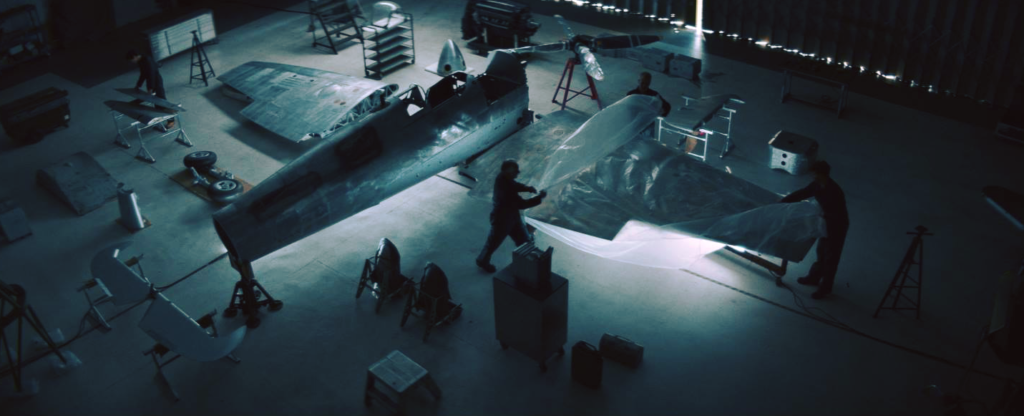
Apart of the internal, technical modifications, also some external changes were made, that could be easily spotted when looking at the aeroplane. Additionally, instead of being repainted in any of the Spitfire military painting scheme, the fuselage and wings were left bare metal and polished to high gloss to emphasise the beauty of the Spitfire design and to make the aeroplane even more unique among the other warbirds.
And that´s how the new name was born – the Silver Spitfire. The now shiny aeroplane is adorned by black and white logo of the ‘Silver Spitfire – the Longest Flight Expedition’ placed on both sides of the fuselage, approximately in the same places where once the Spitfire had her RAF markings. On the both sides of the fuselage, next to the expedition logo, but closer to the tail section, the aircraft wears a small British flag together with the new, civil registration – G-IRTY, painted in black. Another marking might be found on the aircraft nose, and this is the IWC Schaffhausen logo – a well-known Swiss watch manufacturer is among the main partners of the Silver Spitfire project. Finally, the top part of the Silver Spitfire nose was also painted in matt black, to reduce the sun glare, that could be dazzling the pilot – a similar solution as used for some aeroplanes in the late years of the World War II, when aircraft, especially the American-manufactured ones, were flying in bare metal painting-scheme, without any camouflage applied.
In the first place, one of the main principles of the restoration was to keep the aeroplane as original as only possible. Certainly, finding the original parts of Spitfire was neither easy, nor cheap task. Nevertheless, the restoring team did their best to fulfill this condition, starting with re-using all available and approved original parts of MJ271. In case the replacement was needed, also the original parts were used, if only possible. The extreme care the restoration was provided with could be proved by the fact, the renovating team managed to preserve the original and unique patina on the fuselage, caused by the exhaust fumes during the long years of that aircraft service. And they managed to do that despite of peeling all the paint covering the aeroplane and then the polishing process. As a result, the now G-IRTY is said to be one of the most original airworthy Spitfires, with approximately 90% of the original parts.

The maiden flight of the restored Silver Spitfire, piloted by Matt Jones, was performed on 9th July, 2019, over 50 years since MJ271 last flight. And after few more control flights, the aircraft is now ready to begin her new adventure and the longest journey.
The abovementioned founders of the Boultbee Flight Academy, Matt Jones and Steve Brooks, will be the pilots to fly around the world at the controls of the Silver Spitfire. Needless to say, both are not only the well experienced pilots, but also the interesting persons.
Matt Jones’ flying career started in the RAF Combined Cadet Force in Exeter, where he was flying the Chipmunks. Thereafter he got his private and professional pilot license in USA and in New Zealand, Jones underwent flight training on Tiger Moths. Currently he is flying as the Lear 45 captain. In addition, he flies a Squirrel helicopter and is also the Spitfire display pilot and instructor in the Boultbee Flight Academy.
Steve Brooks, instead, is a helicopter pilot and explorer, who already visited over 150 countries and set a few new records. For instance, in 2001 he became the first man in the world, who drove a land-based vehicle (which he personally designed) from America to Russia, crossing the Bering Strait. Three years later, in 2004, he flown a helicopter between the North and South Pole, also becoming the first man in history, who managed to do that no small feat. Earlier this year, in June, he took the training in the Boultbee Flight Academy to join the Spitfire pilots society and participate in the record flight.

It should not be forgotten that both Brooks and Jones, who already were the experienced pilots, passed the complex training in the academy they founded, in order to even more improve their skills and to be maximally prepared for the journey of their lifetime. The practice part of the training included flying a DeHavilland DHC-1 Chipmunk and North American T-6 Harvard – just like years ago the RAF military pilots trained, before they were allowed to take seat in a Supermarine Spitfire fighter. Even in these times, in general the Boultbee Flight Academy is trains the Spitfire pilots in roughly the same way it was used more than 70 years ago.
Certainly, Steve Brooks and Matt Jones are not the only people behind the Silver Spitfire – The Longest Flight project. The aforementioned Lachlan Monro, became the project director, being responsible of managing the operational and commercial aspects of the expedition, the technical support at the time of the flight will be provided by Gerallt Jones, who, on a daily basis, is a Chief Engineer at Boultbee Flight Academy.
This historical flight will be documented by film producer, director and cinematographer Benjamin Uttley and well-known aviation photographer John Dibbs. In addition, the famous French aviation illustrator Romain Hugault will record the Silver Spitfire in her flight around the world through the works of art. This operational team will follow the Spitfire in a Pilatus PC-12 aircraft, piloted by Ian Smith – another Spitfire and Hurricane pilot.
The originators and organizers of the record-setting flight did not forget about the back-up for the Silver Spitfire and another aeroplane, Spitfire Mk. IX RR232, called ´City of Exeter´, restored by Martin Phillips was designated the reserve aircraft. The back-up Spitfire was temporarily painted silver to resemble the Sliver Spitfire and currently looks like the G-IRTY twin brother, but just not polished.
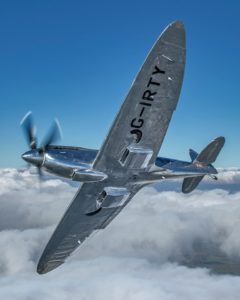
The Silver Spitfire will take-off on 5th August, 2019, from Goodwood Aerodrome in Chichester, West Sussex, the home base of Boultbee Flight Academy. The flight around the world is scheduled for four months, and the aeroplane will visit over 30 countries, including – Faroe Islands, Iceland, Greenland, Canada, USA, Russia, Japan, Taiwan, Hongkong, Vietnam, Thailand, Myanmar (Burma), India, Pakistan, United Arab Emirates, Bahrain, Kuwait, Saudi Arabia, Jordan, Egypt, Cyprus, Greece, Italy, Switzerland, Germany, Holland and France, finally returning to England in December. Along the route, the Spitfire team plan to visit 87 airports in all those mentioned countries. Certainly, the real route may vary from this schedule, as many factors may influence the flight, starting with the meteorological conditions. An alternative flight plan, that may include South Korea and China, is also being considered.
The idea behind ‘Silver Spitfire – the Longest Flight Expedition’ is not only about achieving something that have never been achieved before, but the whole project has also a second, a bit deeper meaning. As Spitfire is considered as a symbol of freedom not only in England, but in the entire world, so the idea is to visit countries which owe their freedom to that aeroplane. Especially that in the skies of some of those abovementioned countries, no Spitfire has been seen since the end of World War II.
Additionally, this is also a way of commemoration of all the people who were standing behind this iconic aircraft. And eventually, the project aims at inspiring the young and future generations, and also enjoys sharing the beauty of the marvellous Spitfire aeroplane design.
We invite you to follow the progress of the expedition at the official website of Silver Spitfire – The Longest Flight project – www.silverspitfire.com as well as at its social media channels on Facebook, Twitter and Instagram.
We also will be sharing the news about the Silver Spitfire’s journey around the world at our fan page on Facebook.
Headline photo – John M. Dibbs, 2019 – source: www.facebook.com/thesilverspitfire
All photos © Silver Spitfire – The Longest Flight Expedition, used with permission. The following sources were used to create this article:
1. silverspitfire.com
2. The Telegraph (www.telegraph.co.uk).
3. warbirdsregistry.org
4. „Pilot” magazine, issue from 1st November 2018

